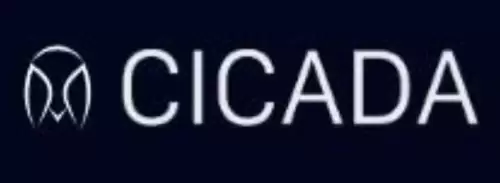Dive into the world of stablecoins with Tether, Circle, and Coinbase. Explore the trends, insights, and potential risks shaping the future of digital finance.

Tether, Circle, Coinbase: Stablecoin Titans Clash on Wall Street
The stablecoin landscape is heating up, and Tether, Circle, and Coinbase are at the forefront. With Circle's recent IPO and increasing regulatory scrutiny, the competition is fiercer than ever. This article breaks down the key developments and what they mean for investors and the future of digital finance.
Circle's Explosive IPO: A New Era for Stablecoins?
Circle's IPO earlier this month sent shockwaves through the market, with shares skyrocketing and briefly putting its market capitalization nearly on par with the circulating supply of its USDC stablecoin. This surge reflects a growing investor appetite for stablecoins and the limited number of publicly traded pure plays in this sector. The U.S. Senate's passing of the GENIUS Act, which advances regulation for stablecoins, has further fueled the rally, with some believing the asset class could reach trillions in value over the next years.
Tether's Dominance and the Decentralization Stance
Despite Circle's impressive growth, Tether remains the undisputed king of stablecoins, holding a dominant market share. Unlike Circle, Tether's CEO has repeatedly stated that there are no plans for an IPO, emphasizing a commitment to decentralization. Wall Street analysts interpret this as a strategy to stick to decentralization while holding Bitcoin and gold.
Coinbase's Role: Riding the USDC Wave
Coinbase benefits significantly from the increased usability of USDC. The platform reflects interest income generated by depositing or operating USDCs as profits. Coinbase has also introduced a new merchant payment solution that facilitates e-commerce payments with stablecoins, further solidifying its position in the stablecoin ecosystem.
Valuation Concerns and Regulatory Uncertainties
While the stablecoin market shows immense potential, valuation concerns are emerging. Circle's stock price net asset ratio (PBR) is significantly higher than Coinbase and other fintech companies, raising questions about whether the rally is running ahead of fundamentals. Regulatory uncertainties also loom large, as the U.S. House of Representatives is reportedly preparing a separate bill that could impact the growth of interest-bearing stablecoins.
Shiba Inu's Ambitious Dream: Overtaking Tether
In a more speculative corner of the crypto world, Shiba Inu aims to become a top 5 cryptocurrency, and even surpass Tether's market cap. While such a scenario would require a massive surge in SHIB's price, some analysts believe it's within reach in the coming years. However, it's important to note that this remains highly speculative and carries significant risk.
The US vs China Stablecoin Battle?
With Tether being a Hong Kong-based company with Chinese capital behind it, and Circle focused on U.S. capital, the stablecoin market is shaping up to be a battleground between the U.S. and China.
Final Thoughts
The stablecoin market is a dynamic and rapidly evolving space, with Tether, Circle, and Coinbase vying for dominance. While opportunities abound, investors should proceed with caution, carefully considering valuation concerns, regulatory uncertainties, and the inherent risks associated with the crypto market. It's like watching a high-stakes poker game – exciting, but you wouldn't want to bet the house without doing your homework!














































































